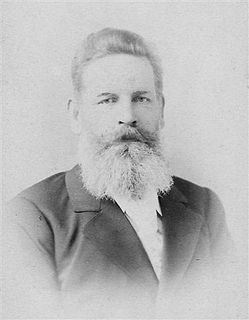
Finno-Ugric or Finno-Ugrian (Fenno-Ugrian), is a traditional grouping of all languages in the Uralic language family except the Samoyedic languages. Its formerly commonly accepted status as a subfamily of Uralic is based on criteria formulated in the 19th century and is criticized by some contemporary linguists such as Tapani Salminen and Ante Aikio as inaccurate and misleading. The three most-spoken Uralic languages, Hungarian, Finnish, and Estonian, are all included in Finno-Ugric, although linguistic roots common to both branches of the traditional Finno-Ugric language tree are distant.

The Uralic languages form a language family of 38 languages spoken by approximately 25 million people, predominantly in Northern Eurasia. The Uralic languages with the most native speakers are Hungarian, Finnish, and Estonian; while other significant languages are Erzya, Moksha, Mari, Udmurt, Sami, and Komi, spoken in northern regions of Scandinavia and the Russian Federation.

Ural-Altaic, Uralo-Altaic or Uraltaic is a linguistic convergence zone and former language-family proposal uniting the Uralic and the Altaic languages. It is generally now agreed that even the Altaic languages most likely do not share a common descent: the similarities among Turkic, Mongolic and Tungusic are better explained by diffusion and borrowing. The term continues to be used for the central Eurasian typological, grammatical and lexical convergence zone. Indeed, "Ural-Altaic" may be preferable to "Altaic" in this sense. For example, J. Janhunen states that "speaking of 'Altaic' instead of 'Ural-Altaic' is a misconception, for there are no areal or typological features that are specific to 'Altaic' without Uralic."

Ilmarinen, the Eternal Hammerer, blacksmith and inventor in the Kalevala, is a god and archetypal artificer from Finnish mythology. He is immortal and capable of creating practically anything, but is portrayed as being unlucky in love. He is described as working the known metals of the time, including brass, copper, iron, gold, and silver. The great works of Ilmarinen include the crafting of the dome of the sky and the forging of the Sampo. His usual epithet in the Kalevala is seppo, a poetic word for "smith". and the source of the given name Seppo.

The Mordvins, also Mordva, Mordvinians, Mordovians, are a people who speak the Mordvinic languages of the Uralic language family and live mainly in the Republic of Mordovia and other parts of the middle Volga River region of Russia.

The Finno-Permic (Fenno-Permic) or Finno-Permian (Fenno-Permian), or sometimes just Finnic (Fennic), are a proposed subdivision of the Uralic languages which comprises the Balto-Finnic languages, Sami languages, Mordvinic languages, Mari language, Permic languages and likely a number of extinct languages. In the traditional taxonomy of the Uralic languages, Finno-Permic is estimated to have split from Finno-Ugric around 3000–2500 BC, and branched into Permic languages and Finno-Volgaic languages around 2000 BC. Nowadays the validity of the group as a taxonomical entity is being questioned, and the interrelationships of its five branches are debated with little consensus.

Andrus Kivirähk is an Estonian writer, a playwright, topical satirist, and screenwriter. As of, 2004, 25,000 copies of his novel Rehepapp ehk November had been sold, making him the most popular 21st century Estonian writer. His book Mees, kes teadis ussisõnu (2007) has been one of the top selling books in Estonia. He has been a member of the Estonian Writers' Union since 1996.

The Volga Finns are a historical group of indigenous peoples of Russia living in the vicinity of the Volga, who speak Uralic languages. Their modern representatives are the Mari people, the Erzya and the Moksha Mordvins, as well as extinct Merya, Muromian and Meshchera languages. The Permians are sometimes also grouped as Volga Finns.

The Baltic Finnic peoples, Baltic Sea Finns, Baltic Finns, sometimes also Western Finns, often simply referred to as the Finnic peoples, are Finno-Ugric peoples inhabiting the Baltic Sea region in Northern and Eastern Europe who speak Finnic languages, including the Finns proper, Estonians, Karelians, Veps, Izhorians, Votes, and Livonians, as well as their descendants worldwide. In some cases the Kvens, Ingrians, Tornedalians and speakers of Meänkieli are also included separately rather than as a part of Finns proper.

Obinitsa is a village in Setomaa Parish, Võru County, southeastern Estonia. It has a population of 187.

Nikolai Karl Adolf Anderson was a Baltic German philologist who specialized in comparative linguistics of Finno-Ugric languages.

Rogier Philip Charles Eduard Blokland is a Dutch linguist and Professor of Finno-Ugric languages at Uppsala University.
Science fiction and fantasy in Estonia is largely a product of the current post-Soviet era. Although somewhat earlier authors, like Eiv Eloon Eiv Eloon and Tiit Tarlap, do exist.

Oliver Loode is an Estonian human rights activist of the international Finno-Ugric movement and Member of United Nations Permanent Forum on Indigenous Issues (UNPFII) for the term 2014–2016.
The Hungarian language is a member of the Uralic language family. The Hungarian Academy of Sciences and scientific support worldwide accept this conclusion. However, there is a history of other theories from before and after the Uralic connection was established, and some fringe theories continue to deny the connection.
Aleksandr Pavlovich Volodin was a Soviet and Russian linguist, specializing in Paleo-Asiatic and Finno-Ugric languages.
IFUSCO is an annual international conference for and by the students of Finno-Ugric languages.

Pre-Finno-Ugric substrate refers to substratum loanwords from unidentified non-Indo-European and non-Uralic languages that are found in various Finno-Ugric languages, most notably Sami. The presence of Pre-Finno-Ugric substrate in Sami languages was demonstrated by Ante Aikio. Janne Saarikivi points out that similar substrate words are present in Finnic languages as well, but in much smaller numbers.

The Northwestern Mari are a subgroup of the Mari people and the indigenous people of the Kirov and Nizhny Novgorod Oblasts of Russia. As other Mari subgroups they belonging to the Volgaic branch of the Finno-Ugric peoples. Their native language is Northwestern Mari, one of the four surviving members of the Mari branch of the Uralic language family.

Josef Budenz was a German comparative linguist specializing in Finno-Ugric who researched the origins of the Hungarian language.
















